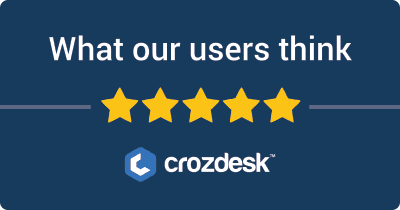
Introduction to Email Automation Software: Klaviyo vs. Mailchimp
Klaviyo and Mailchimp are two of the leading tools in the email automation software landscape, utilized by businesses to enhance their marketing strategies through targeted email campaigns. Klaviyo is known for its advanced segmentation and data-driven approach, making it ideal for e-commerce businesses looking to optimize customer engagement and retention. In contrast, Mailchimp offers a user-friendly platform with diverse features suitable for businesses of all sizes, providing a comprehensive solution for email marketing, automation, and analytics.
Users typically consider Klaviyo and Mailchimp for their robust functionalities, ease of integration with various platforms, and ability to drive better customer engagement through personalized messaging. Both tools cater to different needs and preferences, making the choice between them significant for businesses wanting to achieve optimal email marketing results.
Primary Comparison Aspects
- Features: Analysis of automation capabilities, audience segmentation, analytics, and template design.
- Pricing: Comparison of pricing structures, including free plans, subscription tiers, and value for money.
- Ease of Use: Assessment of user interface, setup processes, and learning curve for new users.
- Support & Resources: Evaluation of available customer support options and educational resources.
This overview aims to provide clarity on which email automation tool aligns best with specific business needs and marketing goals.
Klaviyo VS Mailchimp: Which tool is the most popular?
| Tool | Number of Reviews | Average Rating | Positive Reviews | Neutral Reviews | Negative Reviews |
|---|---|---|---|---|---|
| Klaviyo | 39 | 3.88 | 30 | 1 | 8 |
| Mailchimp | 151 | 2.22 | 50 | 3 | 98 |
Klaviyo is the more popular tool with fewer reviews but a significantly higher average rating of 3.88. In contrast, Mailchimp, despite having a higher number of reviews (151), has a lower average rating of 2.22, indicating a less favorable reception among users.


Klaviyo and Mailchimp: Quick Comparison Overview
| Feature/Aspect | Ahrefs | SEMrush |
|---|---|---|
| Primary Features | – Site Explorer – Keyword Explorer – Backlink Checker – Content Explorer – Rank Tracker |
– Keyword Research – Site Audit – Position Tracking – Content Analyzer – Marketing Insights |
| Target Audience | – SEO professionals – Digital marketers – Agencies focusing on content marketing and backlink analysis |
– Digital marketers – SEO experts – Content marketers – Social media marketers and PPC specialists |
| Main Advantages | – Robust backlink analysis – Comprehensive keyword data – Intuitive user interface – Constantly updated index |
– All-in-one digital marketing tool – Extensive competitor analysis – Wide array of tools for SEO and PPC – Integrated social media management |
| Core Value Proposition | Focused on providing in-depth SEO insights, particularly strengths in backlink profiles and organic keyword rankings. Ideal for users prioritizing content strategy and link-building efforts. | Offers a holistic view of digital marketing, making it easier to manage all aspects of online presence through an extensive range of tools for SEO, PPC, and social media marketing. |
| Ideal Use Cases | – Conducting comprehensive link audits – Developing effective content strategies – Tracking backlinks and organic rankings – Keyword planning for SEO campaigns |
– Managing and optimizing PPC campaigns – Conducting competitive analysis for market positioning – Comprehensive content analytics and SEO tracking – Social media metrics and management |
Most liked vs most disliked features of Klaviyo and Mailchimp
| Feature | Klaviyo | Mailchimp |
|---|---|---|
| Most Liked Features | – Straightforward setup for automated email flows (e.g., cart abandonment). | – Intuitive and easy-to-use interface with a drag-and-drop email builder. |
| – Excellent audience segmentation for targeted marketing. | – Easy integration with various platforms for seamless data synchronization. | |
| – Robust analytics for measuring campaign performance. | – Variety of pre-designed templates and effective automation features. | |
| – Responsive customer support during onboarding and usage. | – Valuable insights and analytics for tracking campaign performance and optimizing strategies. | |
| – Smooth integration with tools like Shopify. | – Availability of a free plan and tiered pricing model for scaling. | |
| Most Disliked Features | – Clunky design interface, especially when editing templates. | – Lack of real-time support for urgent issues. |
| – Reporting features are not user-friendly. | – Outdated or clunky interface for advanced features. | |
| – Lengthy onboarding process that can be overwhelming for new users. | – Limited CRM capabilities, requiring more detailed features for some users. | |
| – Issues with text messaging features being less robust than expected. | – Challenges with creating mobile-optimized email campaigns without coding skills. | |
| – Suboptimal image quality in email uploads. | – Higher-tier plans can become costly as businesses expand, potentially affecting scalability. |
Key Features of Klaviyo vs Mailchimp
Sure! Here’s a comparison of the key features of Klaviyo and Mailchimp for email automation software, including the benefits of each feature and any unique aspects.
Klaviyo
-
Advanced Segmentation
- Benefit: Klaviyo allows users to segment their audience based on behavior, purchase history, and engagement metrics. This ensures that marketing messages are highly targeted, improving open and conversion rates.
- Unique Aspect: The depth of segmentation is particularly strong in Klaviyo, enabling businesses to create segments based on very specific criteria.
-
Predictive Analytics
- Benefit: Klaviyo uses data to predict customer behavior, such as when someone is likely to make a purchase. This helps businesses to send timely and relevant emails.
- Unique Aspect: Klaviyo’s capabilities in predictive analytics provide users with actionable insights that can drive strategic marketing decisions.
-
Integration with E-commerce Platforms
- Benefit: Klaviyo seamlessly integrates with popular e-commerce platforms like Shopify and WooCommerce, simplifying data transfer and ensuring that emails are tuned to customer interactions.
- Unique Aspect: The ease of integration and robust APIs make it particularly powerful for online retailers seeking to leverage customer data.
-
Automated Email Flows
- Benefit: Users can set up automated workflows based on specific triggers, such as cart abandonment or post-purchase follow-ups, ensuring timely communication without manual effort.
- Unique Aspect: Klaviyo offers extensive pre-built flows tailored to e-commerce needs, enabling quick implementation.
-
Multi-Channel Marketing
- Benefit: Klaviyo supports email, SMS, and social media marketing, allowing businesses to connect with their audience across multiple channels seamlessly.
- Unique Aspect: The ability to manage multi-channel campaigns from a single platform enhances the user experience and effectiveness of marketing strategies.
Mailchimp
-
User-Friendly Interface
- Benefit: Mailchimp has a highly intuitive interface, making it accessible for users of all experience levels. Simple drag-and-drop functionality allows for easy email creation.
- Unique Aspect: The designing tools and interface are particularly well-regarded for their simplicity, allowing even beginners to create professional-looking emails.
-
Templates and Design Options
- Benefit: Mailchimp offers a variety of customizable templates for emails, landing pages, and forms, enabling users to maintain brand consistency.
- Unique Aspect: The extensive library of design options allows for significant customization without needing coding knowledge, ideal for small businesses.
-
Performance Reporting
- Benefit: Mailchimp provides detailed analytics on campaign performance, including open rates, click-through rates, and revenue generation, allowing users to adjust strategies accordingly.
- Unique Aspect: The comprehensive reporting dashboard is user-friendly and provides insights that can be quickly acted upon.
-
Integrations and Marketplace
- Benefit: Mailchimp integrates with numerous applications and platforms beyond e-commerce, including social media and CRM systems, fostering greater versatility in marketing efforts.
- Unique Aspect: Mailchimp has a large marketplace of third-party integrations that can expand functionality quickly and easily.
-
Marketing CRM
- Benefit: Mailchimp includes built-in CRM capabilities, enabling users to manage customer relationships, track interactions, and segment based on relationship data.
- Unique Aspect: The inclusion of CRM features within the platform distinguishes Mailchimp from many competitors by combining email marketing with customer management.
Conclusion
Both Klaviyo and Mailchimp offer powerful email automation software tailored to different user needs. Klaviyo excels in advanced e-commerce functionalities and segmentation capabilities, making it a strong choice for online retailers. In contrast, Mailchimp stands out with its user-friendly interface and broad applicability across various industries, serving as an all-in-one marketing platform. The choice between the two may ultimately depend on specific business requirements, size, and marketing objectives.
Klaviyo vs Mailchimp Pricing Comparison
| Feature/Plan | Klaviyo | Mailchimp |
|---|---|---|
| Free Plan | – Up to 250 contacts – Send up to 500 emails per month – Basic email marketing features |
– Up to 500 contacts – Send up to 1,000 emails per month – Basic email marketing features including templates |
| Essentials | – Starts at $20/month for up to 500 contacts – Additional contacts charged at $0.01 each – Includes A/B testing, email support, and landing pages |
– Starts at $13/month for up to 500 contacts – Additional contacts charged at $0.015 each – Supports single-step automation and basic templates |
| Premier | – Starts at $150/month for up to 500 contacts – Advanced features like advanced insights and unlimited A/B tests – Pricing based on custom needs and additional contacts |
– Starts at $20/month for up to 500 contacts – Advanced segmentation, multivariate testing, and advanced audience insights included |
| No Hidden Costs | – Transparent pricing model; costs based on number of subscribers and features chosen | – Pricing increases based on additional features and subscriptions beyond Basic tier |
| Annual Billing Discount | – Offers discount on annual billing (usually around 10%) | – Also provides a discount when billed annually (up to 15%) |
| Free Trial | – 14-day free trial available with full features for new users | – Free plan available indefinitely but with limited features and usage |
| Additional Features | – E-commerce integrations, robust analytics, SMS marketing | – Range of integrations, social media tools, content studio |
| Customer Support | – Email support included with all paid plans; chat support for higher tiers | – 24/7 email and chat support for paid plans; additional resources available through knowledge base |
Main Differences: Klaviyo offers a more extensive feature set that caters specifically to e-commerce, including advanced analytics and SMS marketing. Mailchimp provides broader marketing functionalities, including social media tools, making it suitable for various business types. Pricing transparency is more prevalent in Klaviyo, whereas Mailchimp may incur additional costs as features scale.
Support Options Comparison: Klaviyo vs Mailchimp
| Support Options | Klaviyo | Mailchimp |
|---|---|---|
| Live Chat | Available for all users. | No live chat support. |
| Phone Support | Not available. | Available, but only for paid plans. |
| Documentation | Extensive help center with articles, guides, and FAQs. | Comprehensive resource center with tutorials and FAQs. |
| Webinars/Tutorials | Regular webinars and a variety of tutorial videos available. | Offers webinars, tutorials, and a resource library with guides. |
This comparison highlights that Klaviyo provides live chat support to all users, while Mailchimp limits phone support to paid plan users and offers no live chat. Both platforms feature extensive documentation and additional resources, including webinars and tutorials, to enhance user support.
Unique Features of Klaviyo Vs Mailchimp
| Feature | Klaviyo Unique Aspects | Mailchimp Unique Aspects | Value Proposition |
|---|---|---|---|
| Event-Driven Customer Profiles | Klaviyo builds dynamic profiles based on events, allowing for tailored communications based on user interactions. | Mailchimp offers audience segmentation but not as event-responsive as Klaviyo. | Dynamic profiles enable businesses to send highly relevant and time-sensitive messages, improving engagement rates and conversions. |
| Advanced Predictive Analytics | Klaviyo utilizes machine learning to predict customer behavior and segment audiences on anticipated future actions. | Mailchimp provides basic analytics but lacks the depth in predictive capabilities. | Predictive analytics allow marketers to proactively cater campaigns to customer needs, ensuring timely outreach and maximizing ROI. |
| In-depth Integration with eCommerce | Klaviyo integrates deeply with eCommerce platforms, pulling rich product data for targeted campaigns. | Mailchimp offers integrations but lacks the depth needed for complex eCommerce strategies. | This deep integration helps brands drive sales through personalized product recommendations and timely follow-ups, enhancing user experience and retention. |
| Customizable Flow Builder | Klaviyo features a robust visual flow builder that allows for detailed customization of automated campaigns. | Mailchimp offers automation templates but with more limitations in customization. | A powerful flow builder enables marketers to create unique automated journeys that reflect their brand, improving user engagement and satisfaction. |
| SMS Marketing Capabilities | Klaviyo combines email and SMS marketing seamlessly, allowing cohesive multi-channel campaigns. | Mailchimp has SMS capabilities but is not as integrated with email features. | Seamless multi-channel marketing enhances customer touchpoints and interaction frequency, improving brand recall and overall customer engagement. |
| Real-Time Data Synchronization | Klaviyo provides real-time data updates, reflecting immediate performance analytics and customer activity. | Mailchimp’s analytics can lag in updates, impacting timeliness in response. | Real-time synchronization allows marketers to react quickly to trends and performance, enhancing responsiveness and adaptability in campaigns. |
| Strong Focus on Personalization | Klaviyo emphasizes individual customer experiences, using extensive data to personalize every message. | Mailchimp supports segmentation but generally focuses on broader audience attributes. | Greater personalization fosters better customer relationships, increases open rates, and ultimately drives higher conversion through relevant messaging. |
These unique features of Klaviyo and Mailchimp provide distinct advantages for specific marketing needs. Klaviyo excels in eCommerce with its event-driven profiles and predictive analytics, making it an ideal choice for brands seeking targeted engagement. Mailchimp, while offering valuable automation tools, tends to serve broader marketing needs but may lack the depth required for complex personalization. Therefore, choosing between these platforms will depend on a business’s specific goals and the level of sophistication desired in their email marketing strategy.


